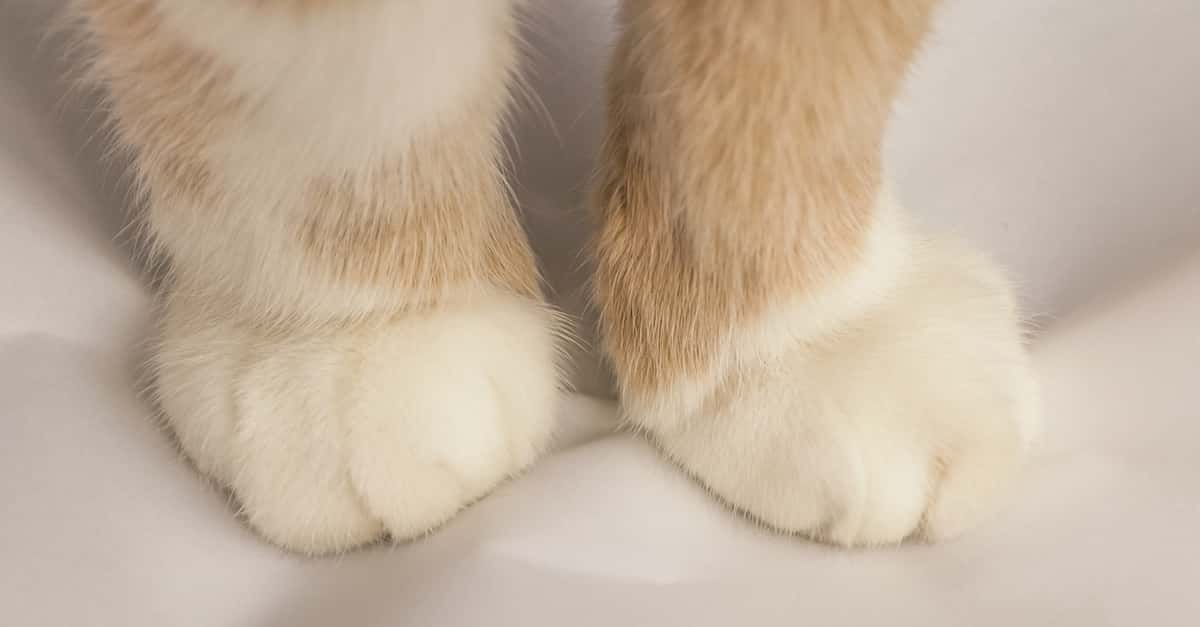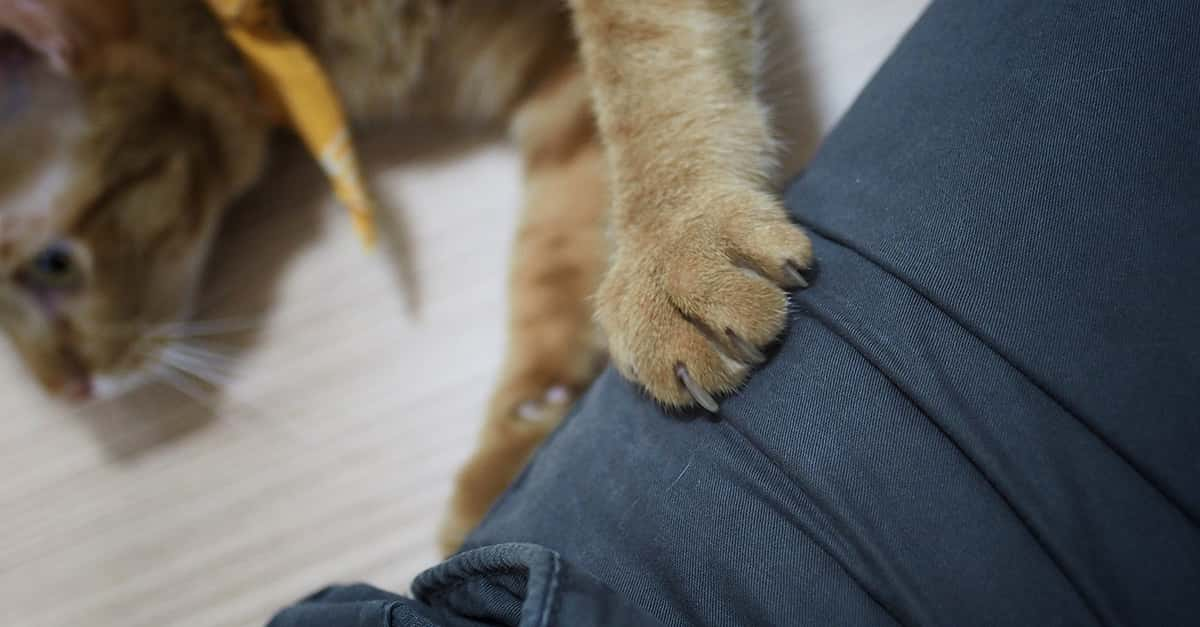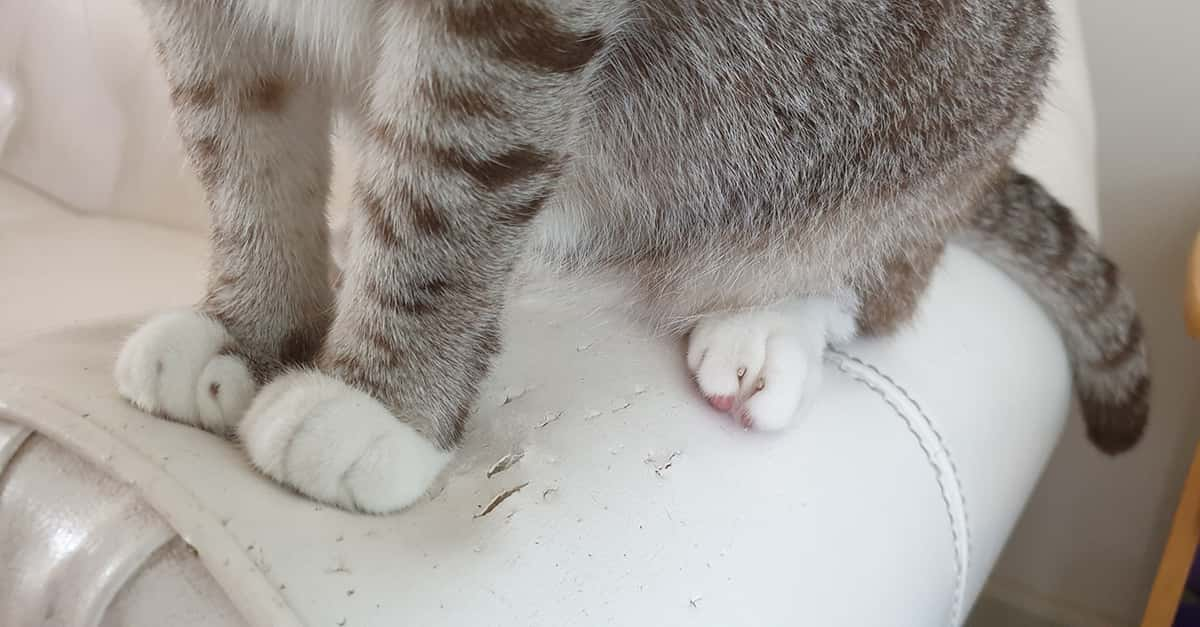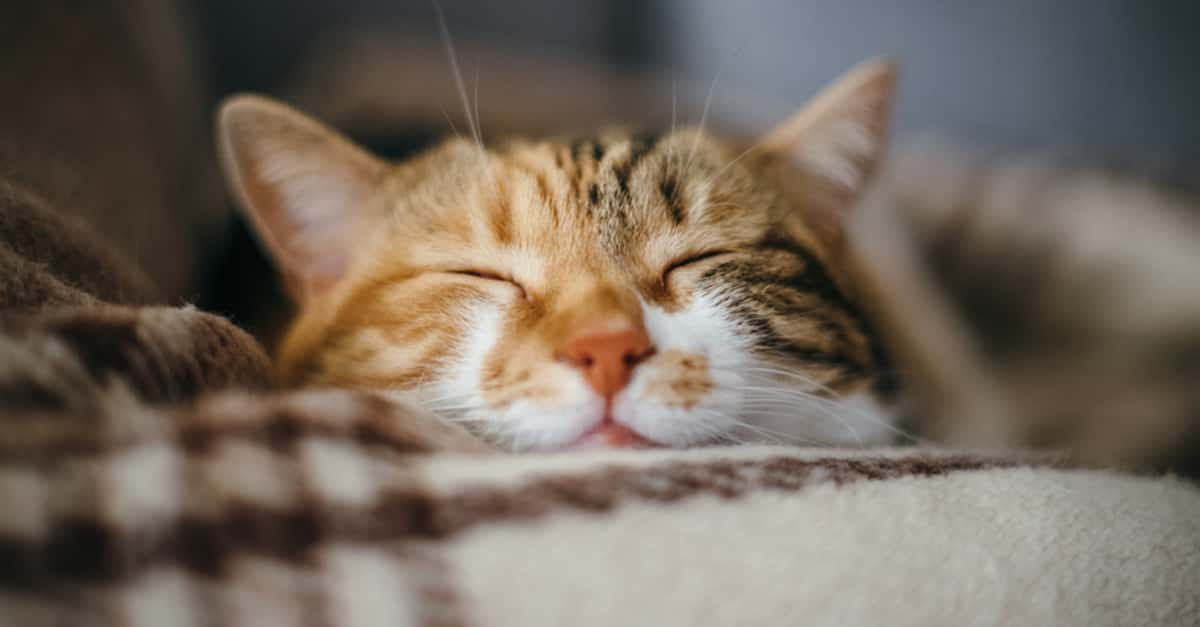Why do cats knead? We all love our furry feline friends, but sometimes their behavior is a mystery to us. At one moment, they are standoffish and nowhere to be found, and in another instant, our kitties are meowing insistently for affection (or food) at our feet. Other times, they’re right on our laps, digging their claws into our shirts and blankets, and performing that strange action we call “kneading.”
So why do they do it? Are they angry at us? Trying to get our attention? Keep reading to find out the fascinating possible answers to why cats knead.
I Knead You
To get to the heart of why cats knead, you first need—get it?—to understand what “kneading” is. When cats knead, they push their front paws out and then back in, often in a familiar, alternating motion, first with their left paw and then with their right paw. Besides “kneading,” this feline action is also sometimes called “making biscuits” or “kneading dough,” because of how it imitates the way humans make bread.
Cats will usually do this on soft surfaces like blankets, pillows, and even particularly comfortable spots on your own clothing.
Feline Fine
As it turns out, though, this kitty movement is somewhat mysterious, and we still don’t have a definitive answer for why cats knead—though we do have some compelling educated guesses. Probably the most common accepted explanation is that kneading is an instinctive behavior kittens perform when they are still dependent on their mother.
These small cats, the wisdom goes, will knead their mother’s teat when they want to get at her milk; supposedly this motion helps the milk flow. But how exactly does this explain the same behavior in our adult pets? Well, scientists think that when our cat is particularly happy or comfortable, it will start kneading, since it associates that happiness and comfort with the feeling of being near its mother.
Let’s all take a short moment here to let out a huge “Awwww.”

Sign up to our newsletter.
History’s most fascinating stories and darkest secrets, delivered to your inbox daily. Making distraction rewarding since 2017.
Cat Fight
These are all plausible theories, but there are other, competing hypotheses about why cats knead, some of them going all the way back to our pet cat’s feral origins. Before domestication, wild cats may have used the kneading motion to pat down the leaves and foliage in potential sleeping areas, thus giving them a nice, comfy place to lay down for the night (though surely this isn’t as comfortable as a modern-day sunny windowsill).
Then again, one of the simplest explanations may be the truest: cats’ paws are extremely sensitive, and they even have scent glands inside their pads. Because of this, kneading may actually be a way for cats to suss out and even claim territory for themselves. Otherwise, cats may need to keep themselves and their handy swipers limbered up after a long nap to better catch their next prey—or else, just to complete their next jump onto the bed.
A Cat of a Different Color
Of course, all cats are different, and certain cats might knead for wildly different reasons. In fact, don’t be worried if your cat doesn’t knead that much: some cats don’t perform the motion very frequently. Other cats might only perform it in certain states—not only when they’re happy, but also when they’re sleepy or even when they’re going into heat.
In this last case, kneading is a temporary way for a female cat to show any eligible males around that she’s, er, ready and willing. Basically, when it comes to your pet cat and kneading, many behaviors and motivations are possible. You know your cat best, and you can likely guess from their attitude why they are kneading at any given moment.
This is all excellent inside information to have about your feline friend—but what if you want them to stop kneading because of the pain it causes you, or else their kneading is ruining your clothes and furniture?
I Knead You to Stop
If you aren’t a huge fan of your cat’s kneading, that’s okay: just make sure you never punish them for the behavior. As we noted, cats often knead to show they are happy and comfortable. Moreover, they don’t realize that their little claws can hurt us when they dig in. In fact, the happier they are, the harder most cats will push into their chosen soft surface.
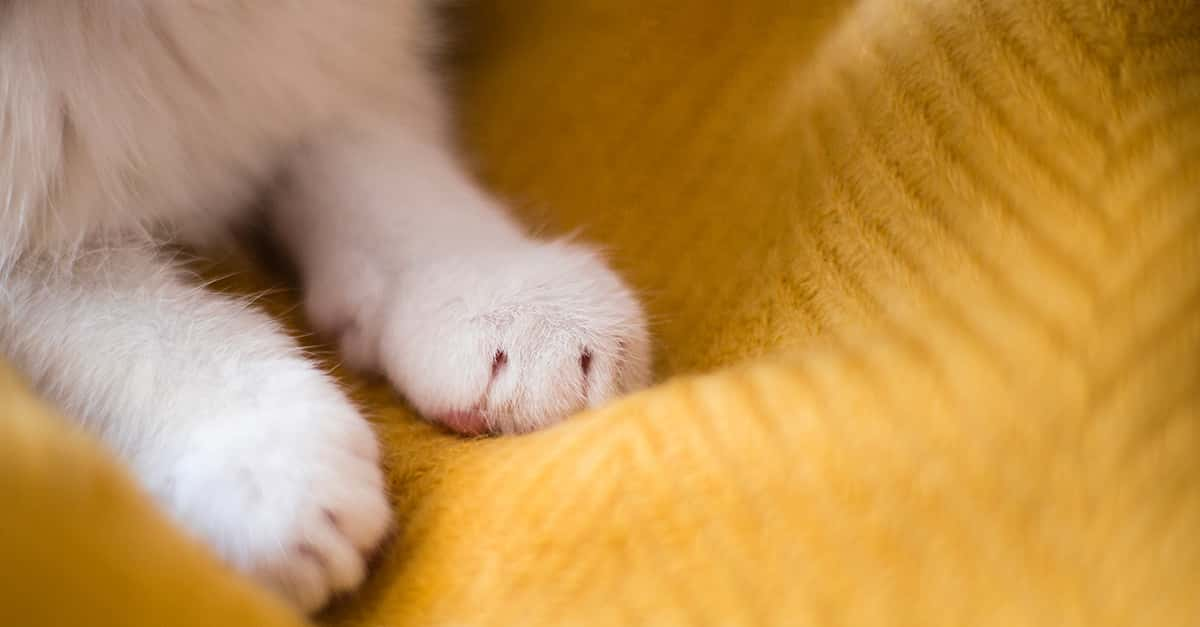 Shutterstock
Shutterstock
While this might tempt us to bat our cat away or otherwise admonish them for kneading, we should resist that impulse. If a cat is interrupted in the kneading process, they can become quite unsettled and surprised. Even more importantly, we shouldn’t taint our feline’s happy moments with negative associations. If the kneading does still bother you and you want to prevent the pain or destruction of your household objects, consider getting your cat a dedicated security blanket.
This blanket is ideally soft and cushy, and it would be just for them and their happy kneading. You could also even place it between yourself and your cat to prevent feeling their sharp claws on you when they knead. This not only helps you, it helps your cat too: cats like to have something of their “own,” and if they take to the blanket, they should adopt it quickly as theirs to knead, nudge, and curl up in.
Soft Kitty, Warm Kitty
In summary, cats may knead for a variety of reasons, though all these theories can only be educated guesses. They may knead as a leftover maternal instinct when they’re happy or particularly comfortable; they may knead because it’s what they used to do as feral, wild cats; or they might knead to stretch, indicate interest, or even start the process of cat-napping.
Whatever the case, just know kneading important to your cat, and act accordingly—whether that means enduring a few pinpricks on your arm or getting a dedicated blanket. Either way, your cat will be as happy as a clam.


